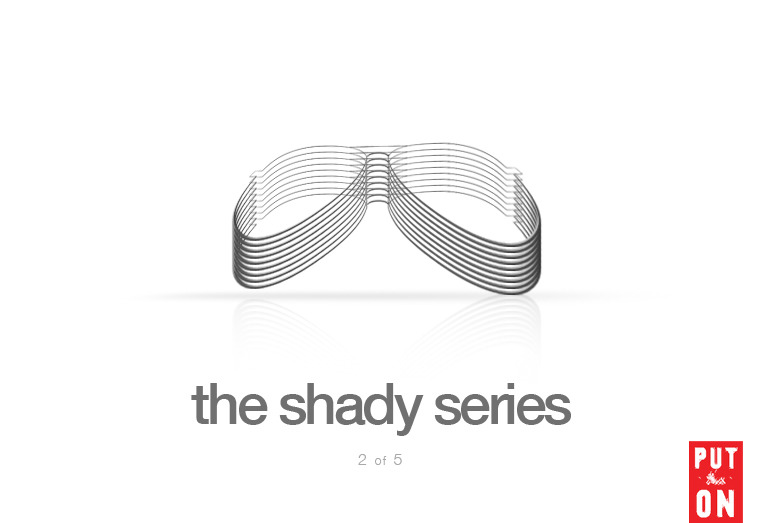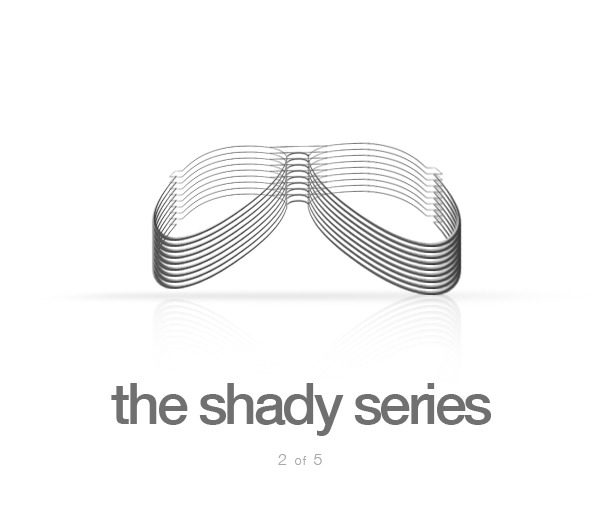
As with everything, some things are made better than others, and you can’t just infer this from price. You have to know how things are made. To determine the quality of sunglasses, you should know what goes into the main components – the frames, lenses, and hinges.
Frames: Aim for block-cut zyl, titanium, and stainless steel
Frames can be made from a number of materials, but we’ll focus on plastics and metals because they have standardized production techniques and are most commonly used.
Most plastic frames are made from zyl (also known as cellulose acetate). The best zyl is made by Mazzucchelli’s Italian factories, as well as smaller artisanal houses in Japan. In a high-end pair of frames, the temples and fronts will be machine cut from blocks of such zyl, which you can can see in this video about Nackymade. In a cheaply made pair of frames, granular zyl will be liquefied and injected into a mold. These frames come out matte and colorless, so they have to be spray painted and treated in order to have any design. Most cheap plastic things you’ve seen are made through injection molding techniques.
The two approaches produce different qualities. First, block-cut frames are flexible, so they can be easily adjusted to fit the contours of your head. Injection molded frames, on the other hand, will just snap if you bend them. Second, there is the appearance. The color on block-cut frames has depth, richness, and character. Hard, injection molded plastics will look flat, as they’ve been spray painted to achieve any color or gloss. You can think of this like leathers – some will have richer colors and more visible depth, while others will look uni-dimensional. Third, there is durability. Remember that high-quality acetate frames achieve their character naturally, whereas cheap, hard plastics must be painted and treated to have any color or shine. As a result, the coatings on hard plastics will chip, bubble, and generally degrade over a period of a few years. Cloudy, white films can also appear. This is especially true if you wear your sunglasses in particularly hot or humid environments, or have an oily face. As such, when buying plastic frames, always aim for ones that have been block-cut from a high-quality (ideally Italian or Japanese) zyl.
The second most common material for frames is metal. Nearly all metal frames will be lightweight, strong, and corrosion-resistant, but each kind of material will have different nuances their character. Titanium and stainless steel are best, though the latter tends to be a bit springy and can feel less sturdy. These two metals can be expensive, however. There are cheaper alternatives, but not without some trade-offs. Aluminum, for example, cannot be easily welded or soldered, so hinges and nose pads have to be fastened with rivets or screws, thus increasing the chance that those pieces fall out and the frames to fail. Monel is also workable, but the nickel in monel can cause allergic reactions in some people.
If you’re accident prone, look for frame that have Flexon metal in the temple shafts and nose bridge. Flexon is a trade name for a flexible “memory metal” that returns to its shape after being bent or twisted. This can be useful if you think you’re likely to sit on your sunglasses or be a bit careless.
Lenses: The trade offs between glass and plastic
Most lenses are made from either glass or plastic. Glass is best for optical clarity and scratch resistance, but they can shatter on impact. They are also heavy, which can cause your sunglasses to fall down your nose. Plastics, on the other hand, are lighter weight and less likely to shatter. The lighter weight form factor may be useful for people who need strong prescription lenses. The downside to plastics, however, is that they have to be treated with a harder tint coating and, at times, an anti-scratch coating as well. These coatings can degrade over time and affect the appearance of your lenses along the edges.
Regardless of the material you choose, it’s critical that your lenses offer full UV protection on both UV-A and UV-B rays. UV rays damage the cornea and retina. Normally, when you’re not wearing sunglasses, your iris will naturally close when there is too much light coming in, or you’ll squint. If you buy cheap sunglasses without good UV protection, however, your iris will open up in order to let more light in, but not filter out the UV rays. Wearing cheap sunglasses can thus be more dangerous than not wearing any at all, so make sure your sunglasses have a label that says they offer UV 400 or 100% UV protection.
You may also want to make sure your frames allow you to replace your lenses. Should your lenses get damaged, it will be cheaper to replace just the lenses than the entire pair of sunglasses
Hinges: Look for smooth, consistent movements
Finally, there are the hinges. Hinges are a small but critical component to the quality of sunglasses. Poorly made ones will wear out, rattle, and disengage easily. This leads to very difficult, if not sometimes impossible, repair jobs.
There are generally three types of hinges: barrel, interlocking, and spring. Barrel and interlocking hinges are durable, but lack flexibility. Spring hinges, on the other hand, give a more customized fit, but are more expensive. The best of these hinges are made in Germany, but it’s often difficult to find out from manufacturers, let alone some retailer, where the hinges come from on any particular pair of frames. The best way to determine the quality, then, is to look for smooth, consistent movement as you open and close the temples.
Conclusion
To buy the best sunglasses, you should always aim for block-cut zyl for plastic frames, and titanium or stainless steel for metal ones. The material for your lenses will largely depend on what you prefer, but always be sure you have full UV protection. Finally, play with the hinges for a bit to make sure they operate smoothly and reliably.
On Monday, Agyesh and I will talk about some of our favorite frames at different price points. Be sure to check back!
* Special thanks to Andrew from Classic Specs for talking with us about technical production details for this article.
** Original artwork above by Agyesh Madan








